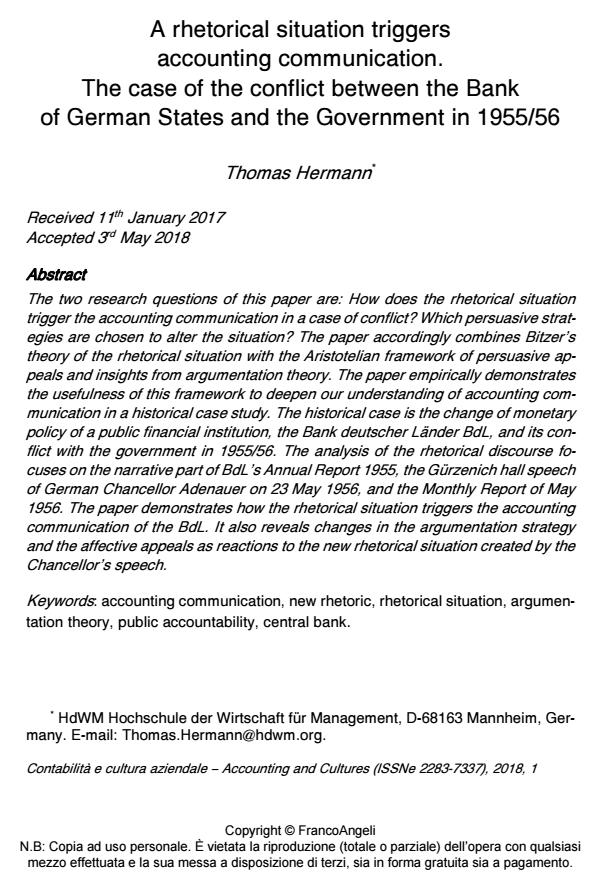A rhetorical situation triggers accounting communication. The case of the conflict between the Bank of German States and the Government in 1955/56
Journal title CONTABILITÀ E CULTURA AZIENDALE
Author/s Thomas Hermann
Publishing Year 2018 Issue 2018/1
Language English Pages 46 P. 73-118 File size 251 KB
DOI 10.3280/CCA2018-001005
DOI is like a bar code for intellectual property: to have more infomation
click here
Below, you can see the article first page
If you want to buy this article in PDF format, you can do it, following the instructions to buy download credits

FrancoAngeli is member of Publishers International Linking Association, Inc (PILA), a not-for-profit association which run the CrossRef service enabling links to and from online scholarly content.
The two research questions of this paper are: How does the rhetorical situation trigger the accounting communication in a case of conflict? Which persuasive strategies are chosen to alter the situation? The paper accordingly combines Bitzer’s theory of the rhetorical situation with the Aristotelian framework of persuasive appeals and insights from argumentation theory. The paper empirically demonstrates the usefulness of this framework to deepen our understanding of accounting communication in a historical case study. The historical case is the change of monetary policy of a public financial institution, the Bank deutscher Länder BdL, and its conflict with the government in 1955/56. The analysis of the rhetorical discourse focuses on the narrative part of BdL’s Annual Report 1955, the Gürzenich hall speech of German Chancellor Adenauer on 23 May 1956, and the Monthly Report of May 1956. The paper demonstrates how the rhetorical situation triggers the accounting communication of the BdL. It also reveals changes in the argumentation strategy and the affective appeals as reactions to the new rhetorical situation created by the Chancellor’s speech.
Keywords: Accounting communication, new rhetoric, rhetorical situation, argumentation theory, public accountability, central bank.
Thomas Hermann, A rhetorical situation triggers accounting communication. The case of the conflict between the Bank of German States and the Government in 1955/56 in "CONTABILITÀ E CULTURA AZIENDALE" 1/2018, pp 73-118, DOI: 10.3280/CCA2018-001005